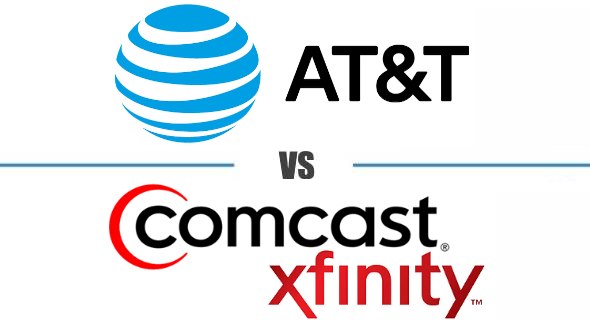Discovering the Fastest Internet Speeds: Providers, Packages, and Tips
Dive deep into internet, internet speeds, internet providers, internet packages for a seamless online experience. Learn how to maximize your internet connection speeds effectively.

Discovering the Fastest Internet Speeds: Providers, Packages, and Tips
The quest for blindingly fast internet is akin to a modern-day gold rush, with many of us scrambling for the most megabits per second we can find.
Speedy connections transform mundane digital experiences into seamless streams of information - a vital artery in the heart of our daily online lives.
Gauging Internet Speed Essentials
Understanding "Mbps" stands central to gauging internet performance. This metric quantifies how much data can be moved each second.
When comparing plans, prioritize download and upload speeds, as these figures directly influence online activities. Higher numbers typically herald a smoother, more responsive online experience.
Remember, advertised speeds and actual performance can differ. Running speed tests measures real-world throughput, not just theoretical maximums.
Deciphering Download and Upload Rates
In the realm of internet connectivity, your download and upload speeds are the backbone of your online experience. These speeds determine how quickly you can get information from the web or send data out.
While download speed is how fast you retrieve data, like streaming a movie or downloading a file, upload speed is pivotal for sending emails, video calls, or online gaming. Both are measured in megabits per second (Mbps).
The average U.S. household's internet speed now exceeds 100 Mbps.
Consider these rates as two lanes on the digital highway: downloads are the larger lane for incoming traffic, while uploads are often narrower for outgoing data. Understanding both is crucial to optimize your internet use and avoid the dreaded buffer wheel.
Tools for Accurate Speed Testing
Accurate speed testing can be the compass to guiding your internet performance optimization.
- Speedtest by Ookla: A widely trusted resource for testing internet speed and performance.
- Fast.com: Powered by Netflix, this service tests downloading speed reflecting video streaming capability.
- Google Fiber Speed Test: Offers a clean interface and quick assessment, beneficial for Google Fiber customers.
- SpeedOf.Me: Utilizes HTML5 technology for speed testing, compatible with a variety of devices.
- TestMy.net: Provides detailed results for both download and upload speeds, alongside latency reports.
Choose a testing tool that aligns with your typical internet usage for the most relevant results.
It's essential to conduct multiple tests at different times to account for network variability.
Elite Internet Service Providers
When scoping out the elite internet service providers, focus on those bringing ultra-fast broadband to the forefront of connectivity. These providers, leveraging advanced infrastructure such as fiber optic and 5G networks, deliver gigabit speeds that cater to the most demanding online activities. Not only do these services enable seamless 4K streaming, but they also support burgeoning technologies that require vast amounts of data bandwidth, such as virtual reality and smart home ecosystems.
To exemplify such providers, names like Verizon Fios, Google Fiber, and AT&T Fiber often top the list with their state-of-the-art offerings. Often boasting symmetrical upload and download speeds, these services provide a robust and reliable internet experience. For professional gamers, remote workers, and digital creators, this level of internet service is not just a luxury; it's a prerequisite. The commitment to peak performance and minimal latency transforms daily digital interactions into an exercise in efficiency and pleasure.
Criteria for Top-tier ISPs
To stand out, ISPs must exhibit consistent network reliability and speed. Look for those offering minimal downtime and rapid issue resolution to optimize your online experience.
Moreover, the pinnacle of ISP performance hinges on expansive coverage. Superior providers excel by ensuring high-speed access is not limited by geographic location. They invest deeply in network infrastructure to provide expansive service, ensuring more communities have access to top-tier internet speeds. This commitment establishes a reliable connection that stands resilient even during peak usage times, offering not only speed but dependability.
Customer support also sets the bar for ISP excellence. Quick, helpful responses to queries and technical issues are fundamental for maintaining uninterrupted connectivity. The best ISPs place a high value on customer satisfaction, equipping their support teams with the tools and knowledge needed to tackle various challenges.
Further, innovation is a hallmark of leading ISPs. They consistently push the envelope with new technologies and services to enhance user experience. Whether it's introducing smarter Wi-Fi networks or pioneering future-proof solutions like fiber-to-the-home, these ISPs invest in technological advancements that not only meet current demands but anticipate future needs, providing a scalable and forward-thinking internet solution.
Spotlight on Leading Internet Companies
In the quest for blazing-fast internet, standout ISPs offer robust and cutting-edge services.
- Comcast Xfinity – Renowned for its comprehensive high-speed cable internet options.
- AT&T – Offers high-speed DSL and fiber-optic internet with extensive coverage.
- Verizon Fios – Known for its superior fiber-optic network and consistent speeds.
- Charter Spectrum – Provides cable internet services with no data caps and fast speeds.
- Cox Communications – Delivers a range of cable internet plans catering to diverse needs.
- Google Fiber – Pioneers in providing ultra-fast fiber-optic internet access with simple pricing.
These companies continually invest in infrastructure to ensure their services are fast and reliable.
From fiber-optic technology to comprehensive bundles, they push the boundaries of what consumers can expect from their internet connection.
Selecting High-Speed Internet Packages
When zeroing in on the perfect high-speed internet package, it's essential to understand the company-specific offerings, which include varying tiers of speed and data plans. Consider the types of online activities you engage in, such as streaming high-definition videos, gaming, or telecommuting. Each of these requires a different bandwidth allocation, so ensure your chosen package aligns with your internet consumption patterns.
In decoding the details of various packages, don't overlook the fine print containing contract details, equipment fees, and introductory pricing strategies. What may appear as an attractively priced plan could potentially inflate after the initial promotional period concludes. Thoroughly vet any data caps or speed throttling policies, as these can drastically affect your online experience, particularly if you are part of a heavily connected household or run data-intensive applications.
Features That Define Premium Plans
Bandwidth allocation skyrockets in premium packages.
When considering the creme-de-la-creme of internet packages, one is actually looking at a suite of enhancements that go beyond basic connectivity. With speeds reaching or even surpassing 1 Gbps, these plans cater to those with substantial demands like ultra-high-definition video streaming, sophisticated online gaming, extensive smart home integrations, or heavyweight telecommuting. Notably, such premium plans often boast symmetrical download and upload speeds, addressing the needs of content creators and teleworkers alike.
Latency is minimized to deliver high-caliber performance.
Apart from blistering speeds, premium plans shout luxury through added benefits, leading to a loftier price tag. This often includes perks such as unlimited data usage, negating any concerns over excess usage fees or the inconvenience of monitoring your data consumption. It's about receiving an unshackled, high-octane internet experience tailored to meet the demands of 2023.
Premium services transcend basic technical support, with providers often extending exclusive customer service advantages such as prioritized support queues, dedicated account managers, and comprehensive, around-the-clock technical assistance. These elevated levels of customer care ensure that subscribers' connections operate at peak performance with minimal downtime.
Comparing Cost vs. Performance
Balancing your budget with your bandwidth needs is critical. As you compare plans, consider not only the monthly fees but also long-term value and performance. Will a pricier plan truly enhance your online activity, or is a mid-tier package sufficient?
Internet plans are akin to a buffet of speeds and features designed to suit various appetites. Your choice hinges on consumption patterns—streamers and heavy downloaders gravitate towards heftier speeds despite higher costs. Conversely, a typical user may find that reasonably priced plans cater to their needs without stretching the wallet.
When evaluating cost versus performance, remember that the highest speed may not equate to the best value for everyone. Is the premium for gigabit-tier speeds justified if your usage is moderate? Sometimes, selecting a plan that aligns with your actual consumption can yield the most satisfaction without unnecessary expense.
Ultimately, striking the right balance between cost and performance is paramount. A thorough cost-benefit analysis is essential before committing to a high-speed plan. Discernment here can ensure you enjoy a robust and reliable service, free of remorse over unused potential or unexpected costs, bringing tranquility to your digital world.
Optimizing Home Internet Experience
To elevate your home internet experience, strategic router placement is crucial. Centralizing the router minimizes obstacles, enhancing signal reach to all corners of your space, thus substantially improving connection quality and stability. Furthermore, investing in a high-caliber mesh network can extend coverage seamlessly across larger residences, eliminating frustrating dead zones that can thwart your online activity.
Regular updates to your devices and router ensure you capitalize on the latest speed enhancements and security patches. Optimizing settings, such as choosing the right frequency band — 5GHz for speed or 2.4GHz for better range — can profoundly impact your network's efficiency, propelling your digital endeavors to peak performance.
Enhancing Home Network Setup
Strengthening your network's core, the router's firmware, is oftentimes overlooked. A simple firmware update can unlock improved performance, security enhancements, and sometimes even new features.
For those with multiple devices, a dual or tri-band router can be a game-changer. It allows you to distribute your home's internet traffic across different frequencies, reducing interference and bandwidth bottlenecks. This is particularly effective when streaming, gaming, or engaging in any high-demand internet activities. Ensuring your device connects to the optimal frequency band can significantly increase network efficiency, offering a smoother online experience.
In addition, consider the benefits of Quality of Service (QoS) settings. These settings let you prioritize traffic to essential devices or applications, ensuring high-priority tasks like video conferencing or online gaming maintain peak performance without interruption from other less critical activities.
Lastly, harnessing the power of wired connections for stationary devices can boost reliability and speed. Ethernet cables provide a direct, fast, and secure connection that Wi-Fi just can't match. For devices that stream high-definition content or handle large file transfers, such as smart TVs or desktop computers, a wired connection is paramount. Including a robust Wi-Fi network combined with strategic use of Ethernet connections ensures that all your devices enjoy the highest possible speeds and the most reliable connection.
Tactics for Minimizing Speed Interference
Optimal network performance necessitates minimizing interference that can slow down internet speeds.
- Organize cables systematically to prevent signal degradation and electrical interference.
- Update network firmware regularly to address bugs and improve performance.
- Use a dual or tri-band router to distribute device load across multiple frequencies.
- Position your router centrally to maximize Wi-Fi coverage and signal strength.
- Implement Wi-Fi extenders or mesh systems for a consistent connection throughout large spaces.
- Limit the number of connected devices when high-speed is crucial for certain tasks.
- Configure QoS settings to prioritize bandwidth for critical applications.
Interference can often be reduced with simple adjustments to your home network setup.
Keeping your software current and hardware optimally placed can pay dividends in connectivity and speed.




